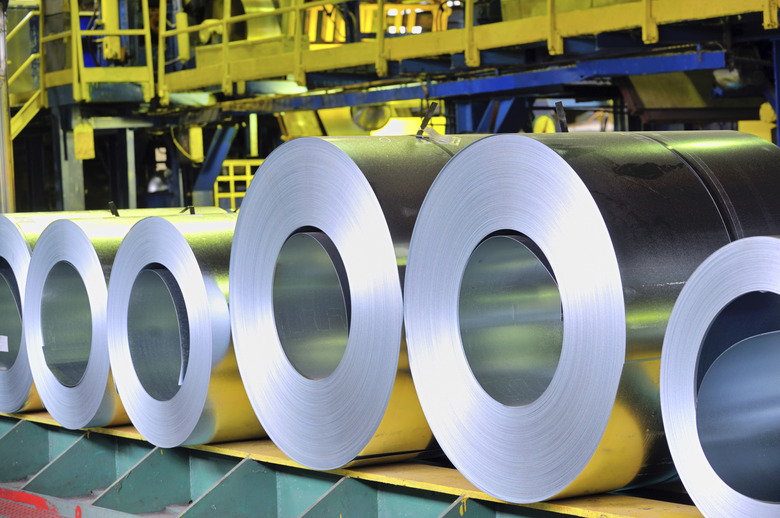Atomic Structure Of Steel
Steel is a metal alloy widely used in construction owing to its strength, affordability and hardness. Its various forms consist almost entirely of iron, but also contain the elements carbon, manganese, phosphorous, sulfur, silicon, and sometimes nickel and chromium. Steel takes advantage of the highly stable atomic lattice structure of iron, with an important twist.
The Crystal Lattice
The Crystal Lattice
Iron, in its solid form, assumes a crystalline structure, meaning simply that the iron atoms are arranged in a regular, repeating pattern called a lattice. Many lattices exist in nature, but iron comes in one of two forms — the body-centered cube, which exists at higher temperatures, and the face-centered cube, its room-temperature form.
The Role of Carbon
The Role of Carbon
Adding carbon to liquid iron — typically in amounts ranging from .035% to 3.5% by mass — changes what happens when the mixture cools to its freezing point (roughly 1,500°C). Instead of going from being a body-centered lattice to becoming a face-centered lattice, the iron atoms settle directly into the latter. At the same time, the carbon atoms lodge in the center of these cubes. This ultimately accounts for the greater durability of steel compared to pure iron.
Cite This Article
MLA
Crystal, Mike. "Atomic Structure Of Steel" sciencing.com, https://www.sciencing.com/atomic-structure-steel-6638014/. 24 April 2017.
APA
Crystal, Mike. (2017, April 24). Atomic Structure Of Steel. sciencing.com. Retrieved from https://www.sciencing.com/atomic-structure-steel-6638014/
Chicago
Crystal, Mike. Atomic Structure Of Steel last modified March 24, 2022. https://www.sciencing.com/atomic-structure-steel-6638014/
